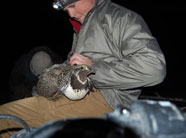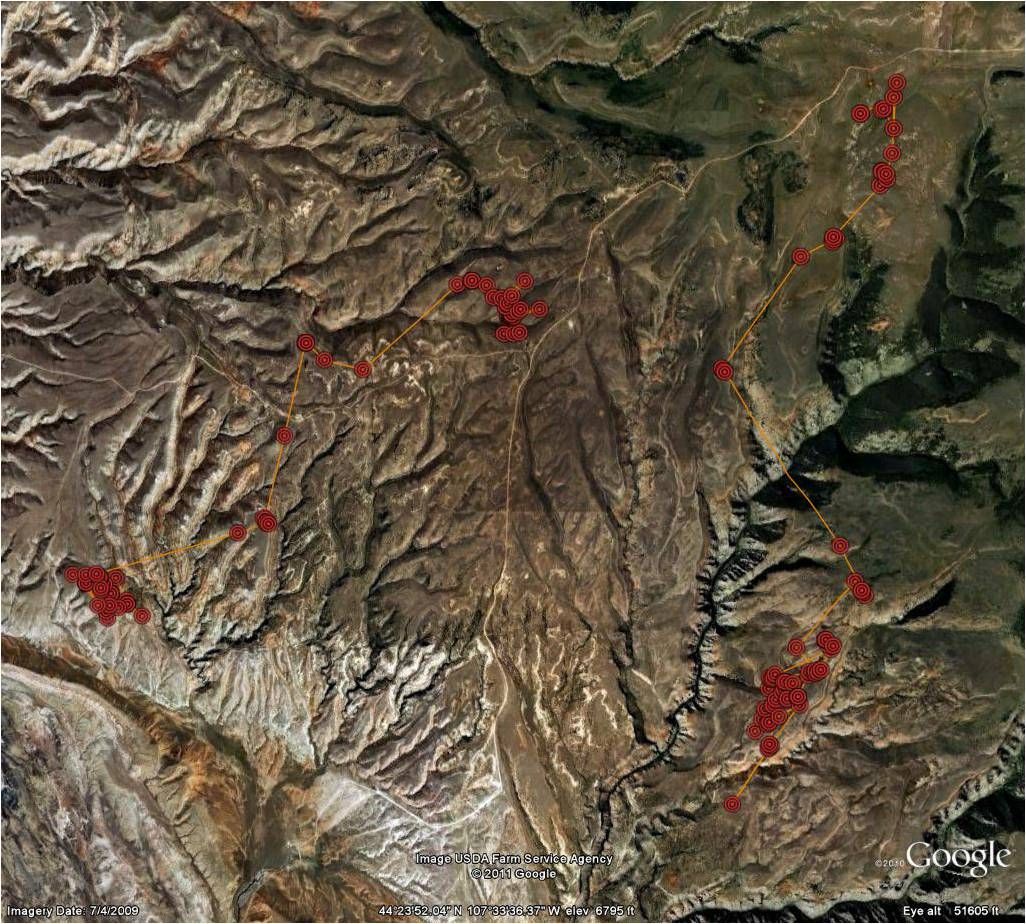

Dr. Jeffrey L Beck
Dept of Ecosystem Science and Management
Agriculture Building 2004
Department #3354
1000 E. University Ave
Laramie, WY 82071
Phone: (307) 766-6683
Fax: (307) 766-6403
Email: jlbeck@uwyo.edu
 Sage Grouse - photo by Gib Mathers
Sage Grouse - photo by Gib MathersPHD Student: Aaron Pratt
For greater sage-grouse (Centrocercus urophasianus), one of the potential factors that may lead to habitat loss, degradation, and fragmentation, and concurrently to population declines, is mining. Bentonite clay deposits in Wyoming make up 70% of the world’s supply, and mines in the Bighorn Basin produced over 50% of Wyoming’s total bentonite production in 2008. Bentonite clay extraction is carried out by open-pit mining that leads to loss of sagebrush (Artemisia spp.) habitat. In addition, mining support activities (e.g., exploration drilling, construction and maintenance of roads, haul trucking) increase disturbance and fragment habitat around mines. Plans call for mining to increase in the future in sagebrush habitat that is occupied by sage-grouse in the Bighorn Basin. These mining activities may prevent or limit the ability of the sagebrush landscape in the Bighorn Basin to provide the space and resources to meet the life history requirements of greater sage-grouse. Therefore, there is a need to assess whether bentonite mining impacts the sage-grouse population in the Bighorn Basin. We initiated our study in spring 2011 through capturing male and female grouse in 2 study areas (1 study area impacted by bentonite mining and 1 reference study area not impacted by bentonite mining) in the eastern portion of the Bighorn Basin for use in monitoring population demographics, movements, and macro- and micro-scale habitat selection patterns for both populations across 3 years (2011–2013). Our study objectives include:

Dr. Jeffrey L Beck
Dept of Ecosystem Science and Management
Agriculture Building 2004
Department #3354
1000 E. University Ave
Laramie, WY 82071
Phone: (307) 766-6683
Fax: (307) 766-6403
Email: jlbeck@uwyo.edu